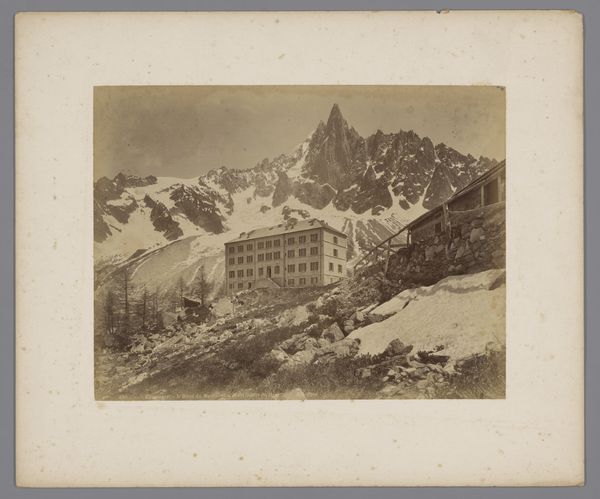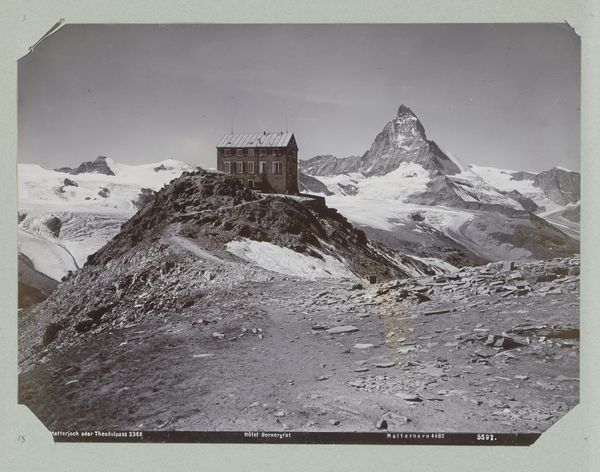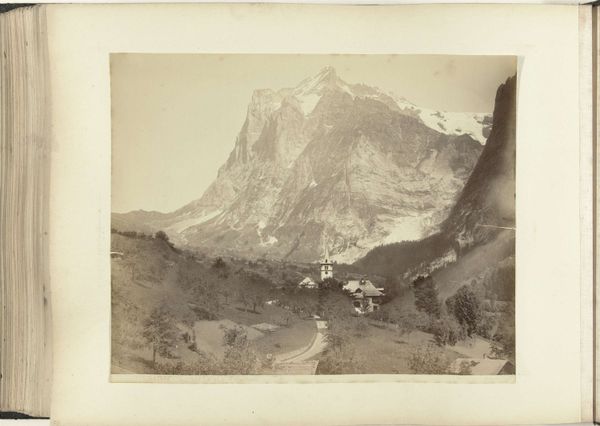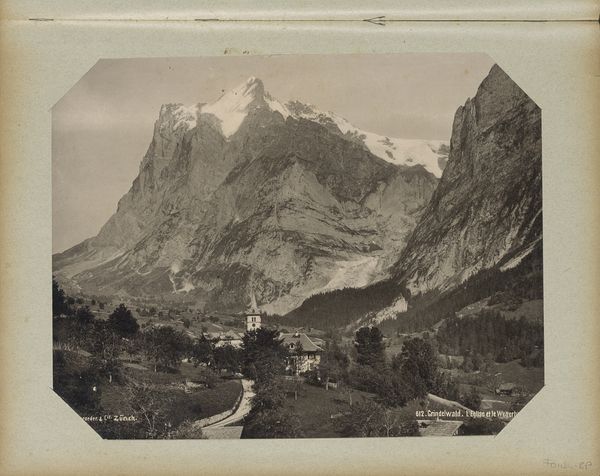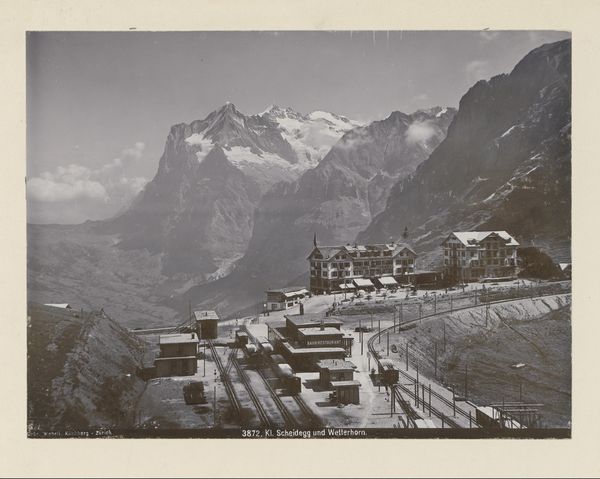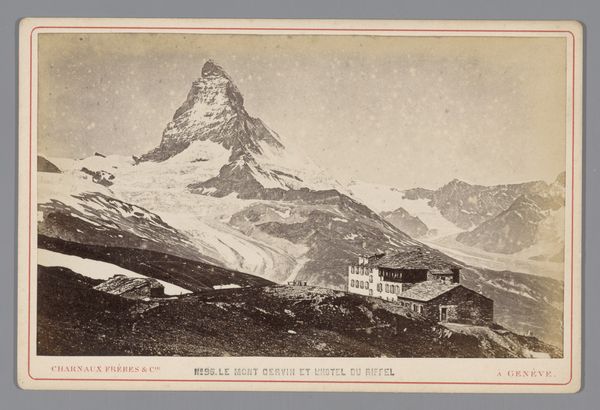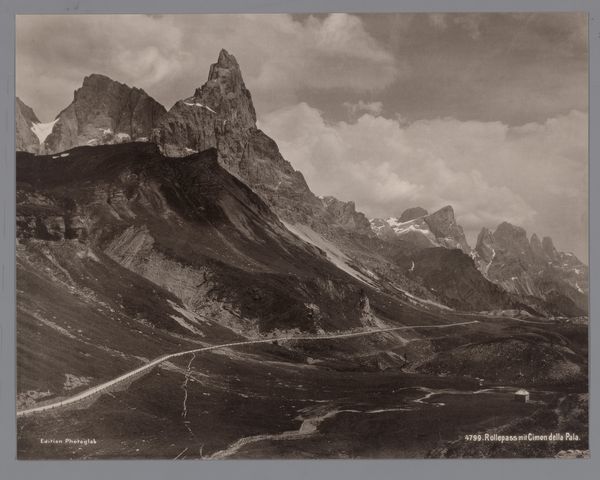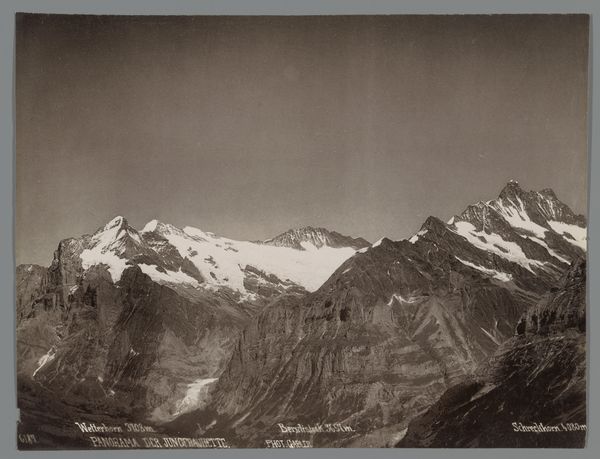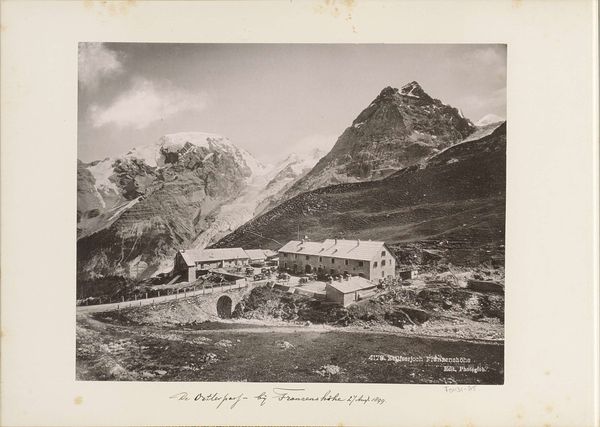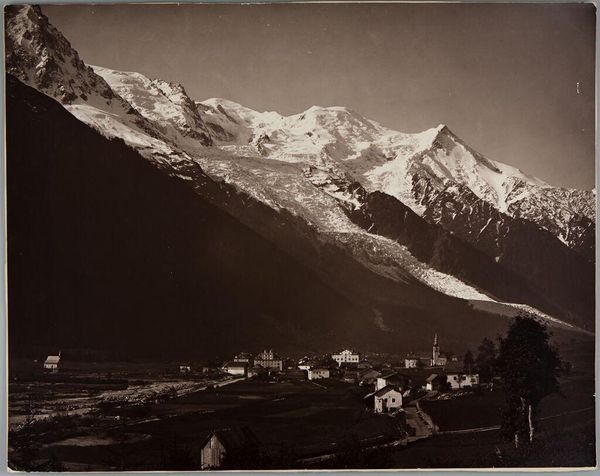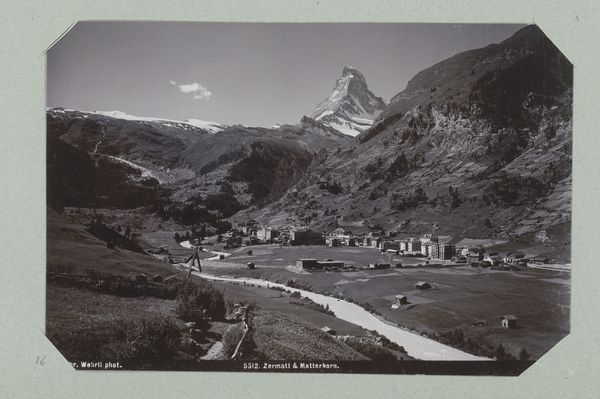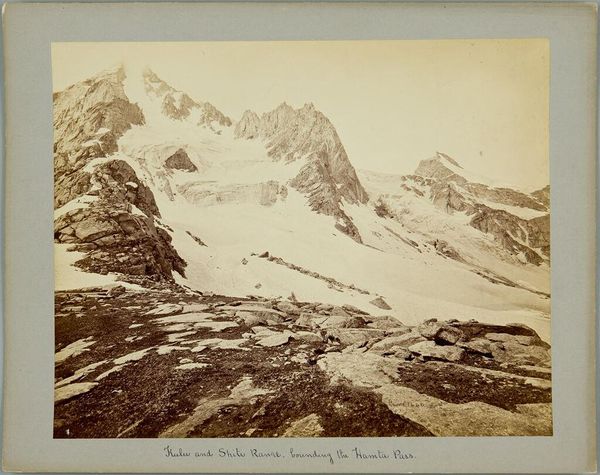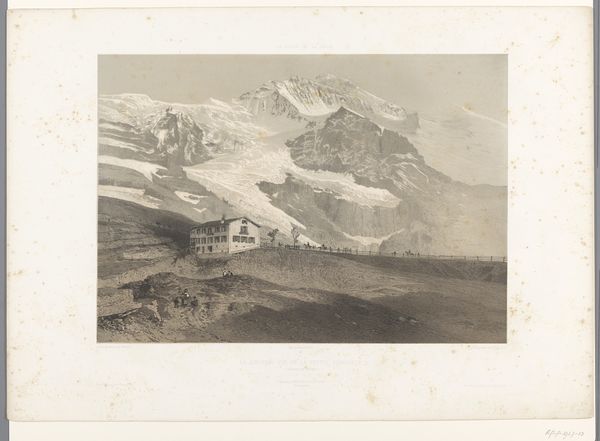
photography, albumen-print
#
pictorialism
#
countryside
#
landscape
#
photography
#
mountain
#
watercolor
#
albumen-print
#
realism
Dimensions: height 211 mm, width 272 mm
Copyright: Rijks Museum: Open Domain
Editor: This albumen print, "Hotel Schwarzsee in Zermatt at the Foot of the Matterhorn," dates roughly between 1870 and 1930 and is attributed to an anonymous photographer. There's a stark stillness to the scene, almost otherworldly. What draws your eye when you look at this image? Curator: The prominent placement of the hotel juxtaposed with the Matterhorn speaks volumes. Consider the period—photography was still developing, and capturing such a landscape was technically demanding. The hotel symbolizes humanity's attempt to not just coexist but also to dominate nature, framing it for consumption and leisure. Does the severe symmetry of the hotel facade suggest a deliberate attempt to control the landscape's wildness? Editor: That’s interesting. I was initially focused on the Matterhorn as this symbol of untamed nature. But the hotel does represent a very human imposition. Curator: Indeed. The Matterhorn, often interpreted as a symbol of strength and resilience, here serves as a backdrop to this edifice of human comfort. It hints at a broader cultural narrative about our relationship with the natural world—the sublime rendered accessible, even commodified. The stark lighting and the choice to capture the image head-on intensifies the visual contrast. Does the image evoke feelings of wonder or unease? Editor: A bit of both, I think. There's something almost clinical about the hotel, yet the Matterhorn is undeniably awe-inspiring. The path leading from the foreground feels almost… staged. Curator: That "staged" quality further reinforces the human desire for order. The path suggests accessibility, a carefully curated experience of nature. Think of the symbolic power associated with mountains in the Romantic era versus the developing tourist industry; one valued awe and transcendence while the other focused on the experiential value. Editor: So, the image becomes this complex interplay between nature and our manipulation of it? Curator: Precisely! The photograph encapsulates a turning point—a shift from experiencing nature as a spiritual force to packaging it as a consumable commodity. It reveals much about evolving cultural values. Editor: I never thought about landscape photography in terms of cultural commentary like that! Thanks!
Comments
No comments
Be the first to comment and join the conversation on the ultimate creative platform.
